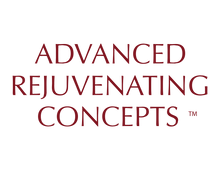Acne Fighting Ingredients 101

According to the American Academy of Dermatology, acne affects over 40 million Americans. Over $2.2 billion was spent in acne treatment alone in 2004. As skin care professionals, we know that acne is not limited to teens; more adult women are experiencing acne symptoms as a result of hormonal imbalances. Its effects are physical and emotional, which makes acne therapy a solid market for professional treatment and retail growth–if, you know the condition, treatment limitations and are realistic with client expectations.
Many clients want to look and feel better without delay, downtime and at a price that is budget-conscious. They also want safe skin care solutions.
In my experience as a skin care facility owner and product distributor, I have noticed a growing demand for natural skin care solutions that work, but without chemical ingredients. First, we must understand the condition prior to treatment, which puts consultation and skin analysis the forefront of acne therapy, then we need to define what natural and chemical solutions are available, and have the opportunity to deliver treatment plans based on the clients individual acne characteristics. With expertise and thorough product knowledge, we may be able to decipher the best solution to help give acne clients the best management.
What we know about acne
Acne is a skin disorder that can be mild to severe, presenting with overactive sebaceous glands and poor desquamation. Together, these variables result in plugged follicles, blackheads and whiteheads. Mild acne can also be referred to as non-inflammatory acne. Inversely, inflammatory acne conditions can present with infection (P. Acnes bacteria) and inflammation, which can lead to painful cysts or nodules that increase the risk of scarring the skin. The underlying question, “Why do I have acne?” continues to be researched.
The primary suspect in acne development is androgens. However, there are more variables to consider with adult women who suffer from acne. Pregnancy, menopause transitions and female reproductive disorders should be managed medically with a Gynecologist or Endocrinologist. Without medical help, acne can be an ongoing battle. Women tend to get emotional with acne development because it is something they have never experienced before, and they may to have other variables to consider, including excessive hair growth on the face and body, irregular menstrual cycles, dry skin, hyperpigmentation or rosacea. Finding a solution can be a challenge, but with the combination of medical and aesthetic care, the condition may be managed.
Like rosacea, management with topical skin care is just as important as avoiding specific ingredients, foods and environments that may trigger a flare-up, or worsening of the condition.
Products that occlude the follicle increase the prevalence of breakouts. Additionally, the term ‘oil-free’ can be misleading for consumers who don’t understand the benefits of many essential oils for acneic skin, like tea tree oil and citrus oils. Some potentially occlusive ingredients include shea butter, mineral oil, lanolin, petrolatum and squalene. Ingredients consumed through the foods they eat can play an important role in acne management. Foods that contribute to a steady blood sugar (low glycemic index (GI) diet), along with an elimination/reduction of dairy foods may help improve acne conditions. Unfortunately, the acne-dairy relationship has yet to develop a definitive link between the two, and eliminating dairy has not worked for everyone with acne. Finally, there are several other factors that may contribute to acne and should be considered during treatment, including sun exposure, stress, alcohol consumption, dehydration, medications. Advising on the many alternative treatment options can help improve your value as a skin care provider.
Natural vs. chemical acne therapy
There is a very common misconception that natural or organic is good, while manmade “chemicals” are harmful. Modern chemists are beginning to call this widespread believe ‘chemophobia,’ a distrust of chemicals or anything perceived to be a chemical. Essentially anything has the potential to be dangerous; it all depends on how it is used or consumed. Apples, for example, are one of the most widely available, cultivated fruits consumed by people for their nutritional value. A typical apple–when eaten–gives us dietary fiber, some vitamin C and phytochemicals (substances that are currently being researched for their potential to reduce the risk of some types of cancer). Apple seeds contain a small amount of compounded amygdalin, sugar and cyanide. One apple and its seeds do not contain enough poison to harm or kill us, but consuming nearly a cup of apple seeds just might. Although you advocate for ‘natural’ skin care solutions, the ingredients used to formulate the product could still be manmade.
Naturally derived extracts and oils can be created synthetically in laboratories, offering high quality, consistent and sustainable ingredients without inflicting harm to the environment or depleting natural resources. Everything is chemical, whether natural or manmade, the key is to use the right percentages.
When it comes to acne therapy, we generally perceive ‘natural’ to be ingredients that can be derived from nature. Unfortunately, without chemical exfoliation and oil management, natural solutions cannot be utilized to their fullest abilities. The most notable natural acne solutions include tea tree, citrus oils, apple cider vinegar, honey, willow bark extract, witch hazel, clay or sulfur. Each one of these ingredients may offer a combination of antibacterial, anti-inflammatory or astringent qualities for acne skin. I have a great appreciation for natural ingredients, but these home-remedy solutions are not enough for individuals with persistent acne. Salicylic acid, glycolic acid and benzoyl peroxide are necessary to exfoliate and manage oil on the surface, while helping to reduce the occurrence of breakouts.
Like the cyanide in apple seeds, a low dose of hydroxy acids or benzoyl peroxide used consistently can be beneficial, and overuse of a single ingredient can cause inflammation, dryness and sensitivity. It’s all about balancing the regimen.
Inflammatory or systemic acne conditions that present with an increased risk of scarring need more than cosmeceutical skin care solutions. Prescription retinoids, including Tretinoin (Retin-A®), adapalene (Differin®), tazarotene (Tazorac®) or isotretinonin (Accutane®) improve cellular regeneration, desquamation and prevent breakouts. In many cases, cystic acne clients need an antibiotic to help reduce P. Acnes bacteria and inflammation. Common prescribed antibiotics include erythromycin, tetracycline, doxycycline or minocycline. Finally, oral contraceptives for women, prescription azelaic acid or benzoyl peroxide have also been used to treat acne effectively. None of these solutions are ‘natural,’ but necessary in order to manage the condition, prevent scarring, reduce pain and discomfort, and–probably the most important part of acne care–build confidence, self-esteem and a brighter outlook in your clients life.
Professional acne management
Home care is the most essential part of acne treatment. Aestheticians should retail acne products to help facilitate client care, while simultaneously improving your credentials and client retention. Acne regimens should be concise. Overuse of acne products can result in dry, irritated and sensitive skin, and perpetuate the aversion to ‘chemical’ acne products. Finding a product line that utilizes a combination of good cleansing with oil control, exfoliation and anti-inflammatory qualities can offer a diversified approach to treatment.
Cleansing is the most fundamental part of a skin care regimen. Using a cleanser with salicylic acid or benzoyl peroxide twice daily helps wash away excess oil and dirt to immediately improve the look and feel of the skin, while helping to manage P. Acnes bacteria. These staple ingredients combined with citrus or papaya essential oils or ceramides help prevent dehydration and refine the pores.
Acne is a skin condition that needs help improving the health of the barrier and preventing cellular buildup that causes comedones. Exfoliation is a key component to help resolve all 3 of these problems. However, there are two other important variables to consider: excess oil and inflammation.
Over-exfoliating oily skin may increase oil production. Inflamed, chapped and angry skin can become painful if exfoliated, perpetuating the inflammation process. Depending on the severity of acne and the integrity of the skin’s barrier, a combination of chemical exfoliation via hydroxy acids or benzoyl peroxide can be beneficial to acne skin, in moderation. Acne scrubs could be used sparingly on light comedonal acne, but never on moderate to severe acne with inflammation. Overall, exfoliation is important, but should be used sparingly one to two times per week or as a spot treatment only depending on the type of acne present, barrier integrity and skin tolerance.
Although acne skin is oily, it can become dehydrated. This generally appears as a cellophane-like appearance on the skin surface and, when pinched lightly, the skin holds superficial lines. Exfoliation is an important part of removing keratinized dead skin cells that contribute to dehydration, but hydration is the key to preventing the condition, while keeping the skin supple and reducing acne breakouts. Using a skin moisturizer that is lightweight and absorbs quickly is well tolerated by most acneic skin. Some key natural oils and extracts that may help with acne include tea tree, hemp, jojoba, echinacea, green tea and citrus. Some of these ingredients formulated with non-comodogenic humectants (ceramides, hyaluronic acid, panthenol, glycerin or honey) help improve hydration and overall skin appearance.
Sun care is the best anti-aging support you can give any skin. Photodamage contributes to hyperpigmentation, collagen degradation, capillary damage and dehydration. Many acne clients suffer from post-inflammatory hyperpigmentation, otherwise characterized by red, purple, brown or black spots where a blemish once appeared. Sunscreen may help prevent the severity of PIH, but the cause of the pigmentation is a result of trauma to the skin (i.e. inflammation or physically picking/scratching). PIH can have deep rooted pigment that may span through the layers of the epidermis, meaning it will most likely take a long time to bring the skin back to an even tone. Spot treatment with a kojic and azelaic acid lightener may help improve the look of PIH, while preventing future development of the hyperpigmentation.
There is a common misconception that ‘more is better’ when it comes to clients and their self-prescribed acne regimen. They will try a variety of different products to get relief. They will pick, squeeze and pop zits away, which can increase infection, irritation, PIH and scarring (open sores or scabs should always be considered a wound and handled accordingly).
It’s important to remember that acne therapy is a long-term commitment that requires consistent monitoring and evaluation. As the condition evolves or improves, changes to the home regimen can be addressed for the best results. In my facilities, we approach acne management in two different ways: teen and adult.
Teen acne management involves routine care, education and emotional support to help them improve the look of their skin and self-esteem. At the Skin Rejuvenation Clinique, we offer teen treatments at a base price of $25 for a half-hour deep cleansing facial. Many aestheticians hear that price point and say, “Are you kidding me?” Yet, there is more to the service than the price point. Parents bring their teens in every 2 weeks because it is affordable, they are using the products we retail in-store, and they are getting routing care that helps improve their skin and prevent life-long scarring. Most suffer from comedonal acne, which benefits from light peel treatments and professional extraction services. Up-selling the peel or a partial microdermabrasion adds to the service price point, as do waxing services. Overall, teens need to be educated about their skin and how to practice healthy habits. Routine care is the best way to help instill those habits and–as they grow into adults–become life long clients.
Adult acne can be a hormonal change in women, induced by prescription medication, or combined with rosacea. Women are the primary sufferers of adult onset acne. They can present with dry skin, hyperpigmentation or rosacea symptoms that can put a wrench in many stereotypical treatment plans. Most women experience cysts on the chin and jaw area and can usually feel the infection and hardness grow. Immediate cyst reduction is important in order to help minimize bacteria and growth of the cyst. This may be achieved with a benzoyl peroxide or Jessner peel spot treatment, ultrasonic reduction or a laser. Prescription medication induced acne or rosacea conditions can be moderate to severe.
These clients need a combination of medical and aesthetic care in order to help manage their acne. If the client presents with irritated, chapped and inflamed skin, a short-term dose of antibiotic prescribed by a physician can be instrumental in calming the skin in order to progress with home care and facial treatments. Without medical assistance, adult acne may be an ongoing battle.
Consultation and a good skin analysis are at the forefront of acne therapy. As a professional, depending on the type of acne you are treating, light chemical peels, ultrasonic therapy, microdermabrasion and laser can be instrumental at exfoliating the skin and managing bacteria growth that leads to inflammation. Treatment alone is not sufficient enough to help reduce blemishes and maintain good skin health. Balancing home care with facial treatments is the best course of action for managing acne and preventing scarring. With the growing trend of consumers wanting ‘natural’ solutions that deliver results, it is important to educate your client about their condition and to let them know that there is no cure for acne. Only management. Moreover, a combination of ‘natural’ and ‘chemical’ home care may be necessary to help them improve the health and look of their skin.
Written for Dermascope Magazine







